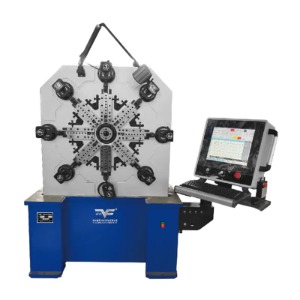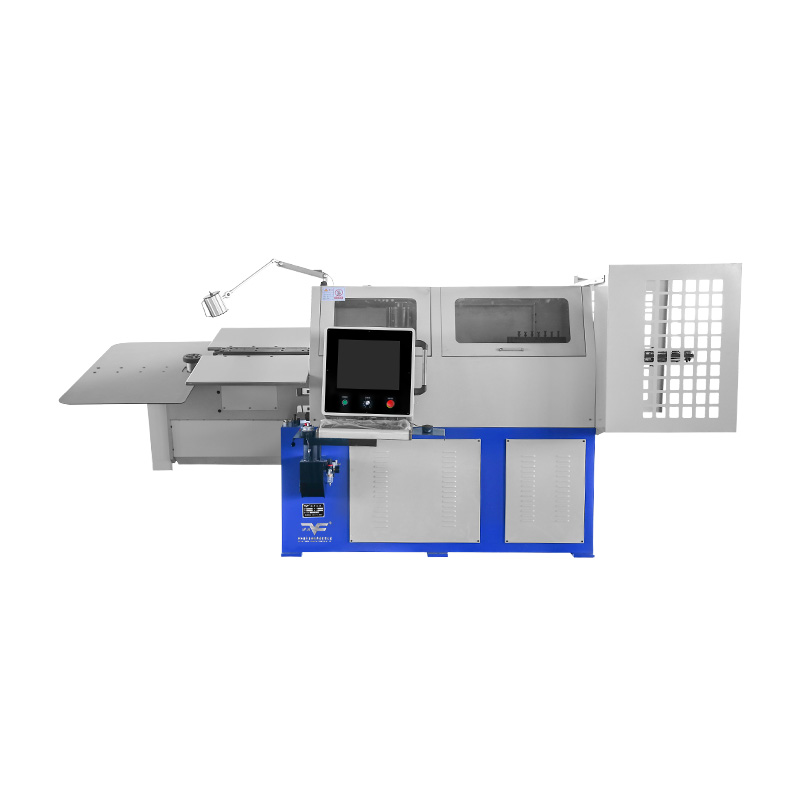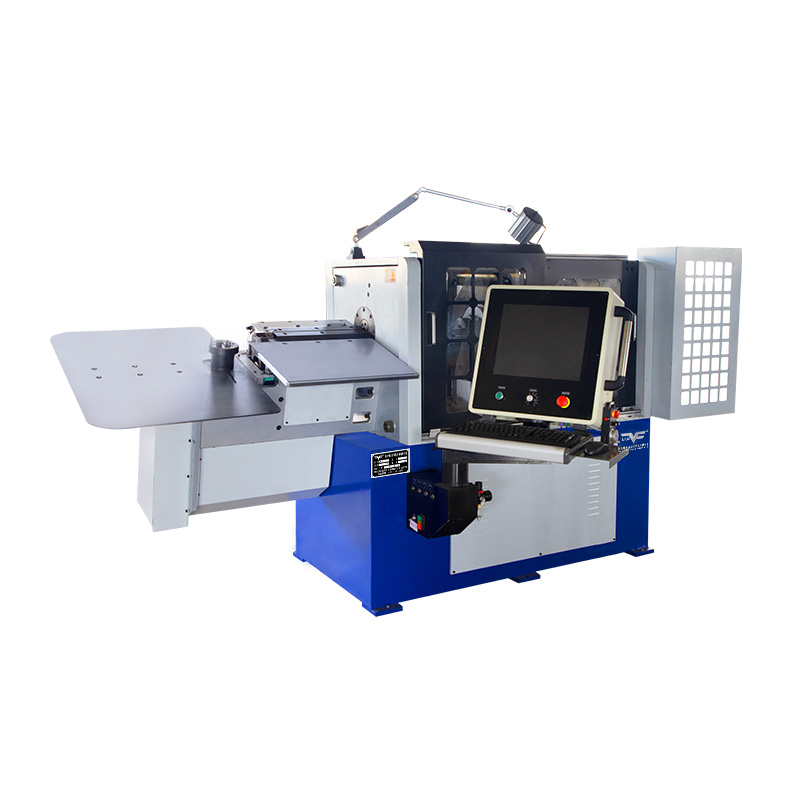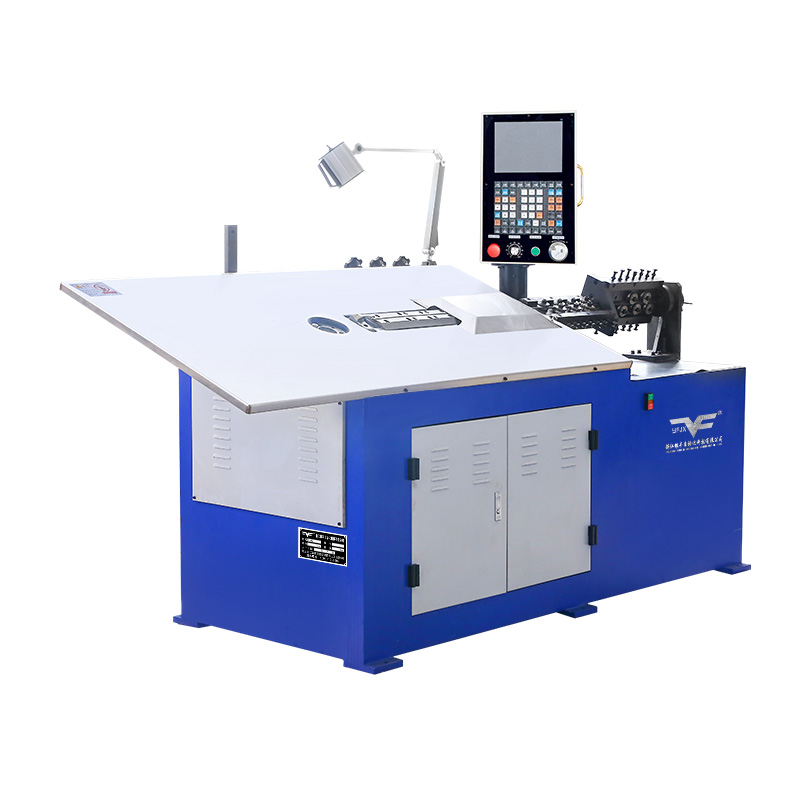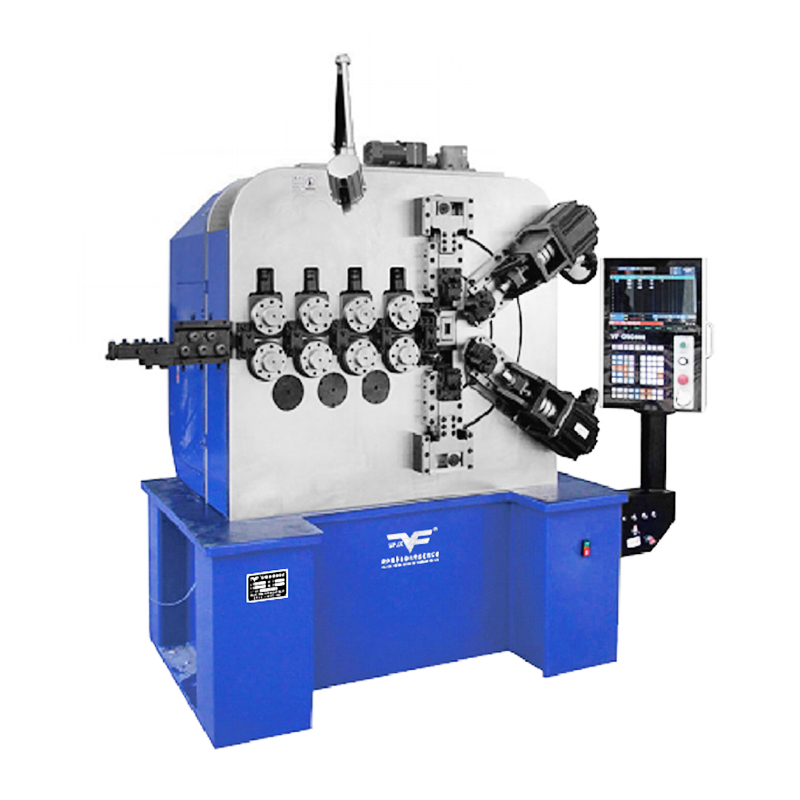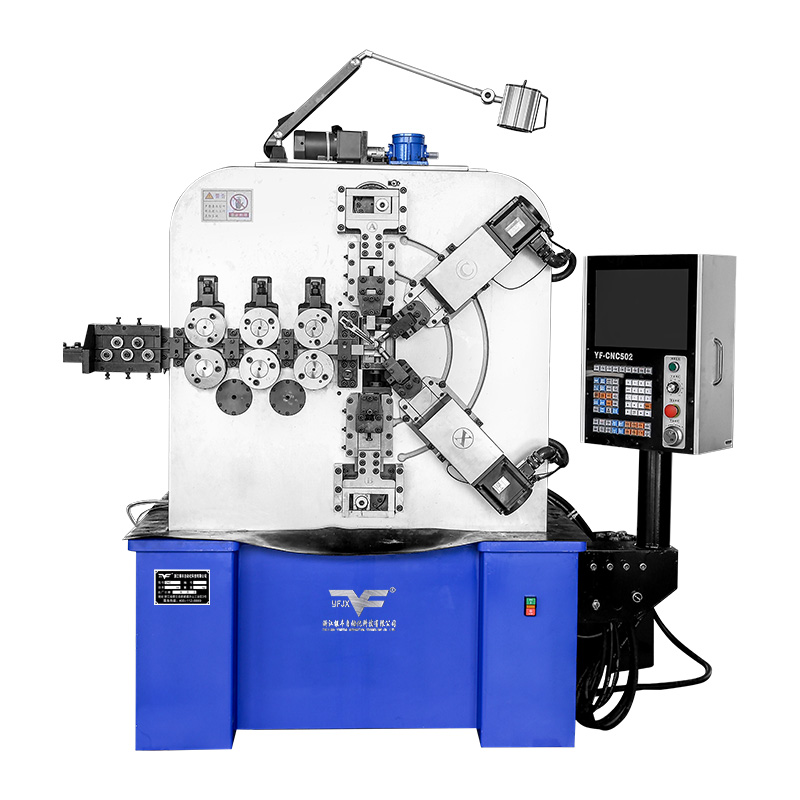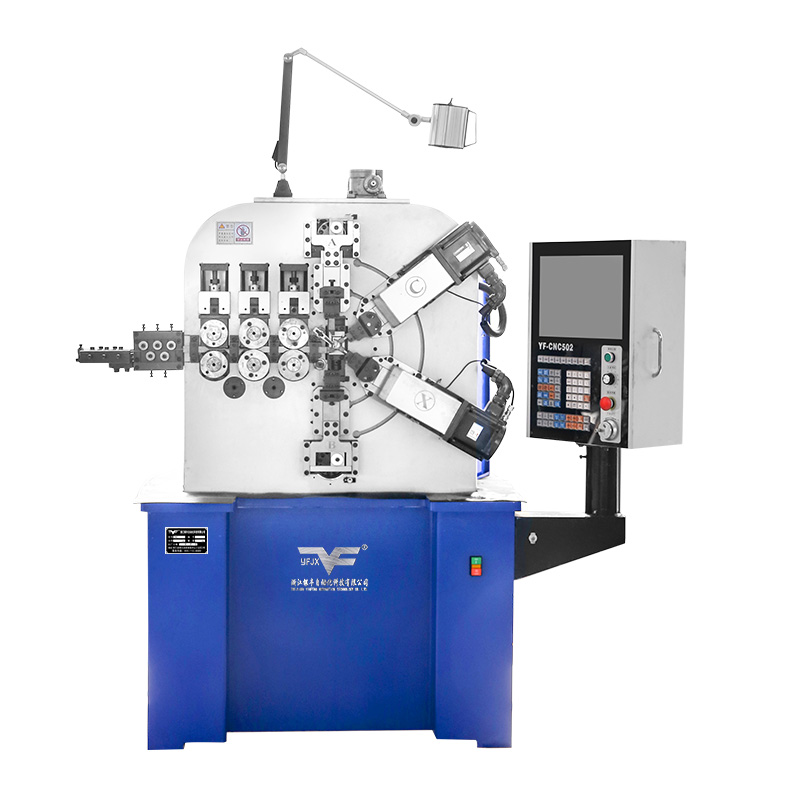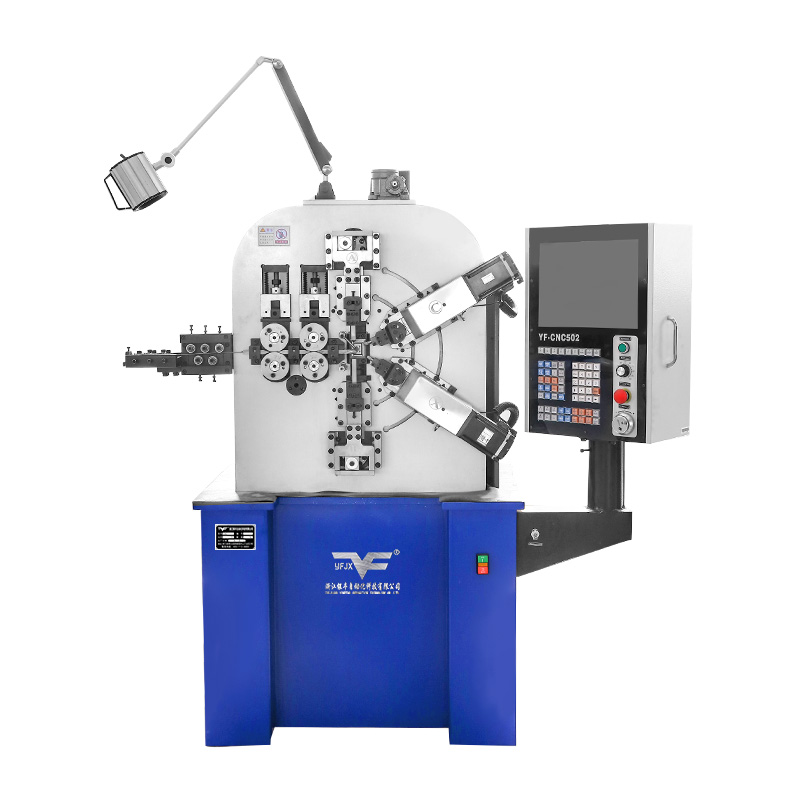From Parts to Product: Understanding the CNC Spring Forming Machine Production Process
Industry News-In industries where precision and efficiency are essential, CNC Spring Forming Machines have become invaluable tools. These machines automate the complex process of forming springs, ensuring high accuracy and uniformity across production. For applications such as shutter mechanisms, a specialized Shutter Spring Making Machine is often employed to meet exacting standards. This article provides an overview of the production workflow, highlighting the steps involved from initial setup to the final product.
Step 1: Setup and Programming of the CNC Spring Forming Machine
The first stage in using a CNC Spring Forming Machine involves setting up the machine and programming the desired spring design. This process includes selecting the appropriate wire material and entering the specifications, such as diameter, coil spacing, and tension, into the machine's control panel.
CNC-YF-1045 10-axis Universal Camless Spring Forming Machine Wholesale
Material Selection
The spring's material is a crucial aspect of the final product's quality. Based on the application—whether for industrial machinery, shutter mechanisms, or other uses—materials like stainless steel, carbon steel, or specific alloys are chosen for durability and flexibility.
Precise Design Programming
Operators input detailed spring parameters into the machine's software. CNC programming allows for high-precision adjustments, such as controlling the wire feed rate, coil diameter, and pitch. The precise programming not only ensures consistent quality but also allows for quick adjustments if specifications change.
Tooling Setup
Before production starts, the machine's tooling must be calibrated. Tooling setup includes adjusting components such as feed rollers, bending arms, and cutting tools, ensuring they are aligned and capable of handling the specific wire type and diameter for the spring.
Step 2: Automated Wire Feeding and Forming
With the CNC Spring Forming Machine programmed and set up, the next step is the automated feeding and forming of the wire into the desired spring shape.
Automated Wire Feeding
The machine automatically feeds the wire into the system, controlling the rate of wire flow to match the programmed design. This level of automation minimizes human intervention, increasing productivity and reducing potential errors.
Spring Forming Process
The wire is bent and coiled according to the programmed specifications. For Shutter Spring Making Machines, this process often includes additional steps to ensure that the springs meet the durability standards required for frequent shutter use. Precision control in forming springs is critical, as even minor deviations can impact the spring's functionality in its final application.
Real-Time Monitoring and Adjustments
CNC machines often have sensors and feedback systems that monitor the forming process in real-time. If any inconsistencies are detected, the machine can make on-the-fly adjustments, ensuring each spring meets exact specifications. This capability is especially useful for complex designs or high-stress applications.
Step 3: Cutting and Quality Control
Once the spring has been formed, the next steps are cutting the spring to length and conducting quality checks.
Precision Cutting
After the spring reaches the desired length, the CNC Spring Forming Machine performs a precision cut, creating a clean edge. This step ensures that the spring can fit precisely in its intended application without additional modifications.
Quality Control and Inspection
Quality control is essential in spring manufacturing. For both general CNC-formed springs and those created by a Shutter Spring Making Machine, inspection ensures that each spring meets the desired tolerance and performance standards. Various measurements, such as tension, coil diameter, and elasticity, are checked to guarantee consistency across the batch.
Error Detection and Rejection
Some advanced CNC Spring Forming Machines are equipped with automatic rejection systems. If a spring fails to meet the set criteria, it is automatically separated from the batch, preventing substandard parts from reaching the assembly line or end-users.
Step 4: Finishing and Packaging
After passing quality control, the springs may undergo additional finishing steps before packaging and distribution.
Surface Finishing
Springs used in demanding environments often undergo treatments such as coating, annealing, or polishing. These processes enhance the spring's resistance to corrosion, improve its appearance, and extend its lifespan. In applications like shutter mechanisms, additional treatments ensure the springs withstand constant movement and environmental factors.
Packaging and Labeling
Once completed, the springs are carefully packaged to prevent damage during transport. Labeling each package with essential information, such as spring type, batch number, and specifications, allows for easier tracking and inventory management.
Advanced Features in Shutter Spring Making Machines
For applications specific to shutter systems, Shutter Spring Making Machines offer tailored features. These machines are built to handle the unique requirements of shutter springs, which often require additional resilience and flexibility for repeated use in varied environmental conditions.
Enhanced Durability Standards
Shutter spring machines are designed with specific durability requirements, making them ideal for creating springs that need to withstand constant stress. The Shutter Spring Making Machine offers control over aspects such as fatigue resistance, ensuring each spring can endure thousands of open-and-close cycles without losing its integrity.
Precision in High-Stress Applications
Shutter systems demand precision, and shutter-specific machines are equipped to handle these needs. With enhanced tooling and programming options, these machines guarantee that each spring meets the specifications necessary for smooth shutter operation.
Benefits of CNC Spring Forming Machines in Modern Manufacturing
Consistency and Quality
CNC-controlled machines ensure uniformity across large production runs, a feature that traditional manual methods cannot match. Whether producing standard springs or specialized shutter components, CNC Spring Forming Machines deliver consistency that meets high industry standards.
Time and Cost Efficiency
By automating the spring forming process, CNC machines significantly reduce production time and costs. They minimize waste by producing parts that meet exact specifications, reducing the need for rework and material overuse.
Flexibility for Customization
CNC programming allows for easy design adjustments, making CNC Spring Forming Machines ideal for custom orders or specialized applications.

 English
English русский
русский Español
Español 简体中文
简体中文